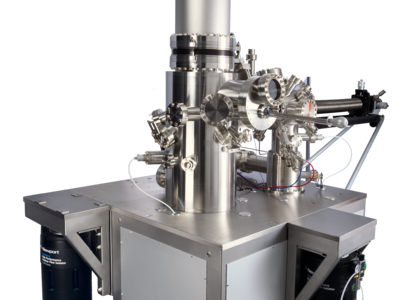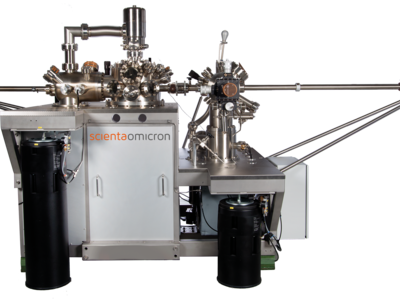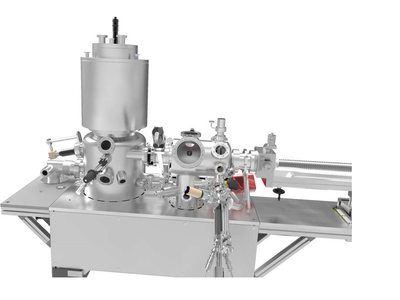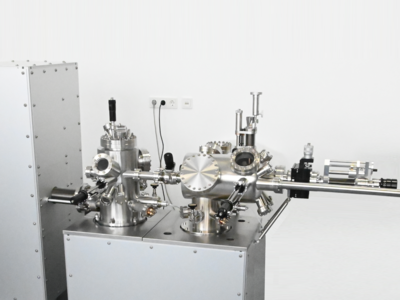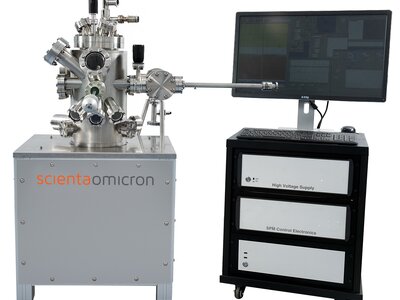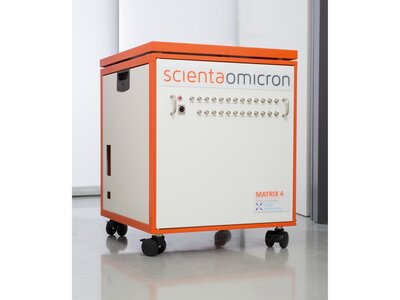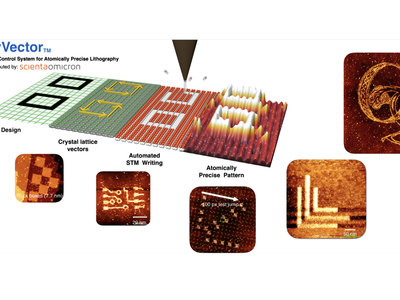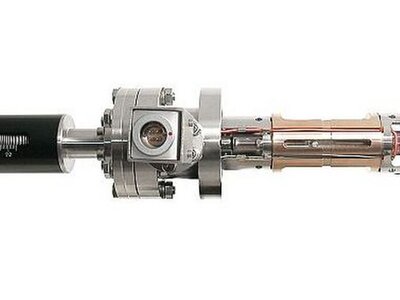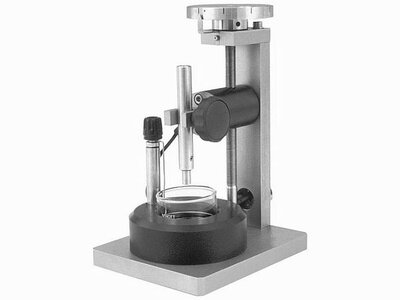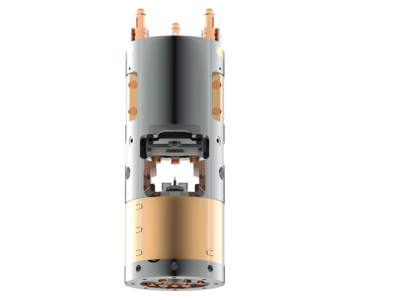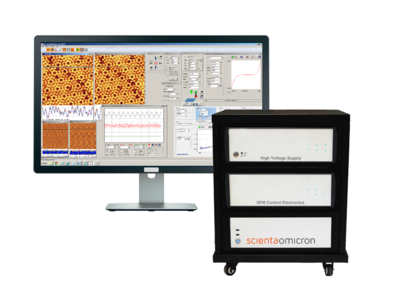Scanning Probe Microscopy (SPM)
Scanning Probe Microscopy (SPM) is the overarching name of an entire family of advanced microscopies, where the sample morphology is probed with a sharp metal tip on the nanometer length scale. The tip is scanned across the surface line by line, while simultaneously recording specific interactions between tip and surface. Thus, a scanning probe image records the magnitude of interaction as function of lateral tip position. These interactions include, for example, tunneling currents, short range van-der-Waals or dipole-dipole interactions. They all have in common that they are heavily influenced by the local structure of the surface, e.g. the absence or presence of molecules or defects. It is routinely possible to achieve molecular, sub-molecular and atomic resolution with SPM techniques.


